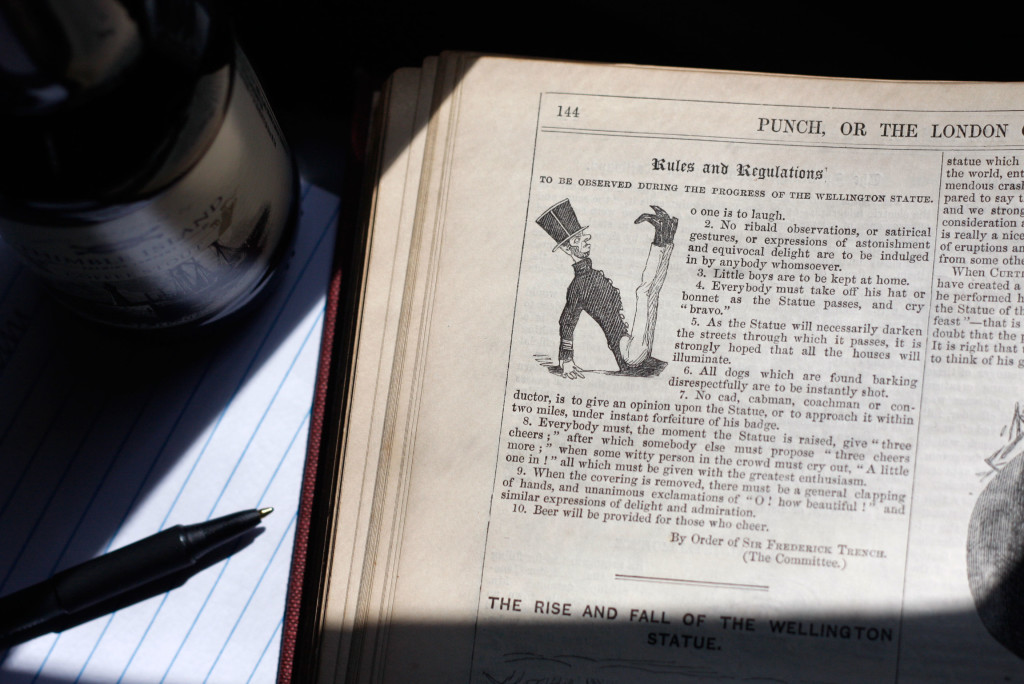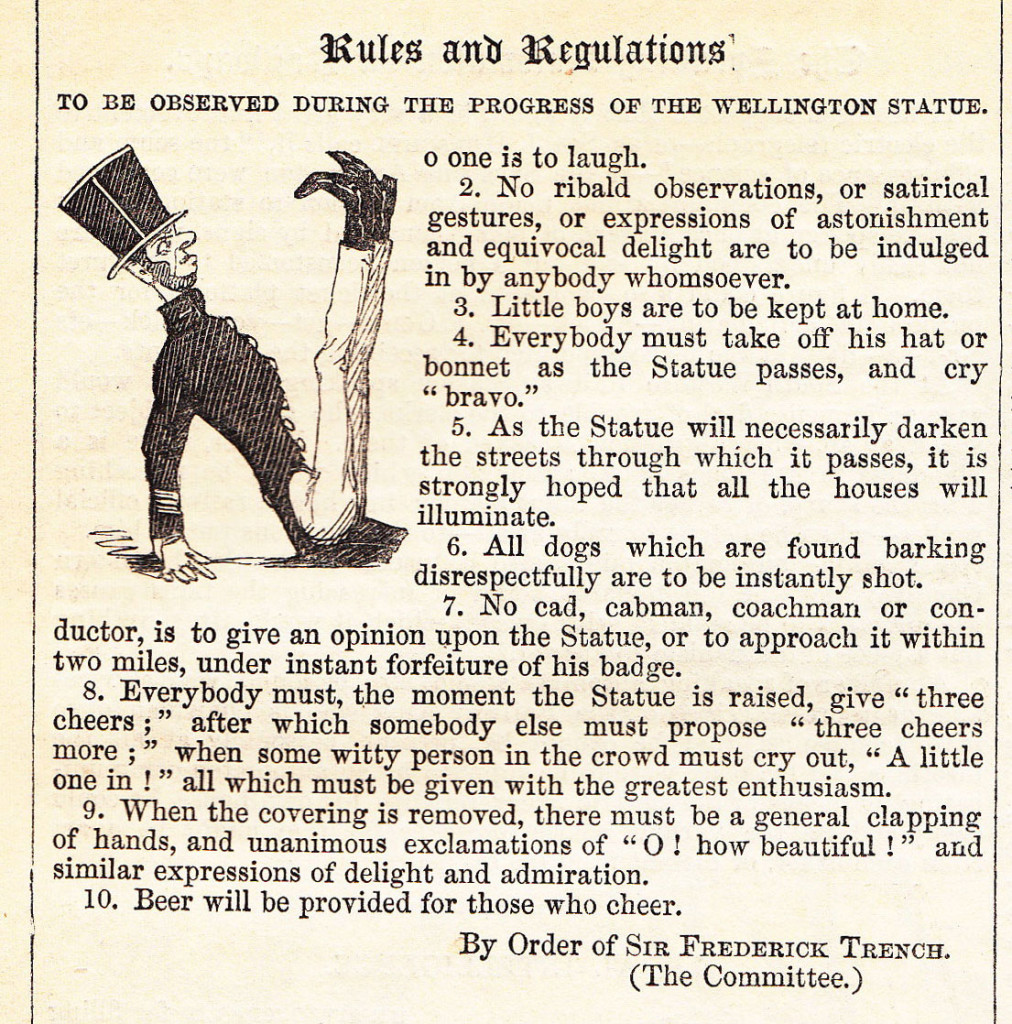Have a drink with: The Duke of Wellington Statue
“A gigantic triumph of bad taste over public opinion.”
Ask it about: Free beer.
In the 1830’s, the Napoleonic Wars were still fresh in memory and Britain was eager to redecorate. Since few things say classicism, patriotism and self-praise quite like a good monument, the idea arose to honor Arthur Wellesley (better known as the Duke of Wellington) with a grand commemorative statue.
Depicting the “Iron Duke” on his trusty horse Copenhagen as the pair might have appeared during the Battle of Waterloo, the bronze statue was commissioned of sculptor Matthew Cotes Wyatt to sit atop a sculptured arch in Hyde Park Corner. Wyatt planned a statue thirty feet high and weighing forty tons, making it the largest equestrian statue in Britain at the time.
He did not plan on all of Britain thinking he was the giant horse’s ass in the whole affair.
Questions swirled from the start. Why this statue? Why so effing big? On top of an arch, really? Has everyone forgotten Wellington’s unpopular anti-reform efforts as prime minister? What’s with all the delays? Oh, and you all do realize HE’S STILL ALIVE, right?
No one felt great about this uncertain compliment to the very icon of British potency (even funnier when you consider he was Irish). Wellington was renowned for his moral character, intellect, heroism and devotion to duty – and here comes a celebrity statue that makes him seem outsize and tacky.
Even Queen Victoria simply called it “bad.”
By fall 1846 there had been years of press coverage, scads of money spent, multiple production delays, and walls demolished just to get the statue into open air. The monument was wheeled in grand procession to its intended place on Hyde Park Corner – because at that size, it was impossible to do anything else – and rather than pretend the slow and purposeful process didn’t exist, the planners decided to go for spectacle.
The statue was “pulled along the Harrow Road by twenty-nine horses on a specially-designed, twenty-ton car in a great military parade that lasted one and a half hours, accompanied by bands playing ‘See the Conquering Hero Comes’ and led by large detachments of Life Guards, Fusiliers, Grenadiers, and Coldstreams, surely one of the most eccentric sights witnessed in nineteenth-century London.”*
The London humor magazine Punch, a dogged critic of the monument, offered some rules for viewers of the procession (see full page here):
Fun Facts:
The Queen was diplomatic but clear: “With regard to the Statue on the arch on Constitution Hill, the Queen is of opinion that if she is considered individually she is bound by her word, and must allow the Statue to go up, however bad the appearance of it will be.” (The Letters of Queen Victoria, vol. 2, p.112-113)
When the arch at Hyde Park Corner was going to be moved to accommodate traffic congestion, finally there was reason to move the statue. It was disassembled, chopped into bits and re-constituted on a pedestal in Aldershot. (The arch was never moved.)
Wellington’s public life was not all medals and statues: he was threatened with blackmail over accounts of his sexual affairs, met with considerable resistance as prime minister (MP’s didn’t follow orders like soldiers), and dueled with a fellow aristocrat over his support of Catholic relief legislation.
Enjoy a little Fry and Laurie, Blackadder-style, with Stephen Fry as a rather punchy Wellington.
Additional Reading:
The Beeb has a nice timeline of the Duke’s life, achievements and challenges.
Key quote from The Spectator, May 30, 1846: “can any one tell us which way the horse’s head is to be turned: will the Duke be riding in or out of town? Perhaps, if he do go over the arch, instead of under, it does not matter which way he may go. And possibly, to please all, the statue might be made to rotate, as we lately saw the figure of a jockey and horse in a window full of sporting subjects: all sides would then be seen, and the figure would be the better roasted.”
The Illustrated London News covered the statue’s build in depth, creating a new media presence around the unveiling.
Turner’s painting Hero of a Hundred Fights shows the statue being removed from Wyatt’s forge.
* P.W. Sinnema, Wyatt’s Wellington and the Hyde Park Corner Controversy, Oxford Art Journal, v.27, no.2 (2004)

